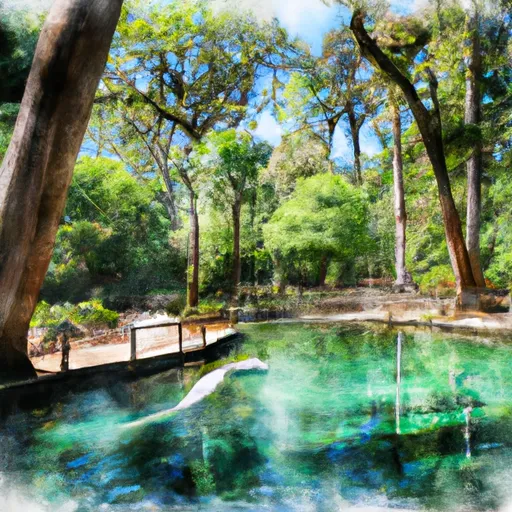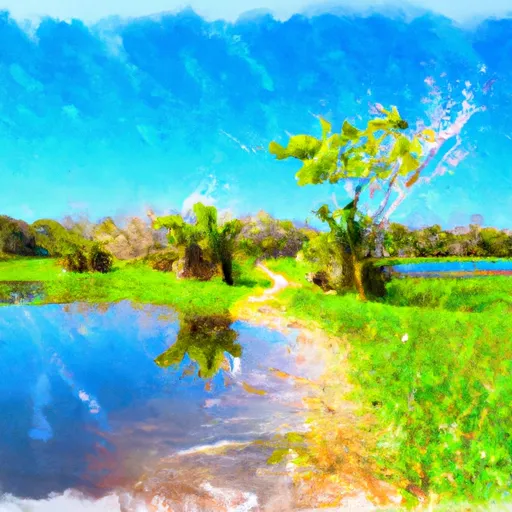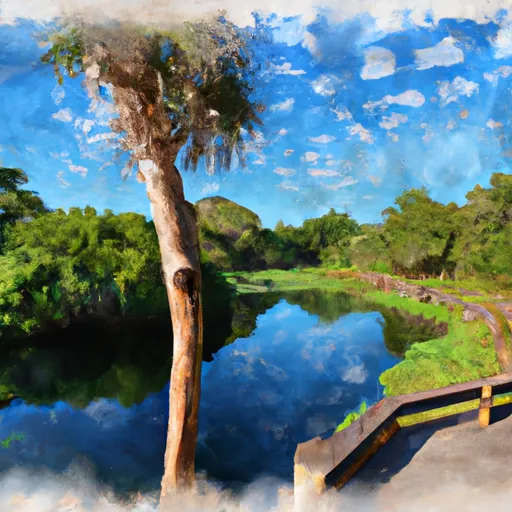Yulee Sugar Mill Ruins Historic State Park
Rate this placeLast Updated: December 29, 2025
Yulee Sugar Mill Ruins Historic State Park, located in Homosassa, Florida, is a fascinating historical site that offers visitors a glimpse into Florida's sugar industry during the mid-19th century.
°F
°F
mph
Wind
%
Humidity
Summary
Here is a summary of the park, highlighting its reasons to visit, specific points of interest, interesting facts, and the best time of year to plan a visit.
Reasons to Visit:
1. Historical Significance: Yulee Sugar Mill Ruins is the site of one of Florida's oldest surviving sugar mills, which operated from the 1850s to the early 1860s. It provides a unique opportunity to learn about the state's sugar production and its impact on the local economy.
2. Natural Beauty: The park is nestled amidst beautiful natural surroundings, including oak trees, remnants of the plantation's gardens, and a serene stream. It offers a tranquil setting for a leisurely stroll or picnic.
3. Educational Experience: The park features interpretive panels that provide insights into the sugar-making process, the lives of the workers, and the plantation's history. It is an ideal destination for history enthusiasts, students, and families looking to learn about Florida's past.
Points of Interest:
1. Sugar Mill Ruins: The main attraction of the park is the well-preserved sugar mill ruins themselves. Visitors can explore the remains of the mill, including the limestone walls, parts of the machinery, and the chimney.
2. Visitor Center: The park hosts a visitor center that offers additional information about the site's history, exhibits, and a short video presentation about the sugar mill and the Yulee family who operated it.
3. Nature Trails: Yulee Sugar Mill Ruins features several nature trails that wind through the park's diverse habitat. These trails provide opportunities for birdwatching, wildlife spotting, and nature photography.
Interesting Facts:
1. David Levy Yulee, the owner of the sugar mill, was the first Jewish member of the United States Senate, serving as a senator from Florida during the 1850s and 1860s.
2. The sugar mill was powered by steam, making it more efficient compared to the traditional wind or animal-powered mills of the time.
3. The plantation encompassed approximately 5,000 acres and employed enslaved African Americans for sugar production.
Best Time of Year to Visit:
The Yulee Sugar Mill Ruins Historic State Park is open year-round. However, the best time to visit is during the cooler months of fall, winter, and early spring when temperatures are milder, and wildlife sightings are more frequent. It is advisable to check the park's official website or contact the park rangers for any seasonal events or closures before planning a trip.
Please note that independently verifying the accuracy of this information across multiple sources is recommended, as details may change over time.
Weather Forecast
Park & Land Designation Reference
Large protected natural areas managed by the federal government to preserve significant landscapes, ecosystems, and cultural resources; recreation is allowed but conservation is the priority.
State Park
Public natural or recreational areas managed by a state government, typically smaller than national parks and focused on regional natural features, recreation, and education.
Local Park
Community-level parks managed by cities or counties, emphasizing recreation, playgrounds, sports, and green space close to populated areas.
Wilderness Area
The highest level of land protection in the U.S.; designated areas where nature is left essentially untouched, with no roads, structures, or motorized access permitted.
National Recreation Area
Areas set aside primarily for outdoor recreation (boating, hiking, fishing), often around reservoirs, rivers, or scenic landscapes; may allow more development.
National Conservation Area (BLM)
BLM-managed areas with special ecological, cultural, or scientific value; more protection than typical BLM land but less strict than Wilderness Areas.
State Forest
State-managed forests focused on habitat, watershed, recreation, and sustainable timber harvest.
National Forest
Federally managed lands focused on multiple use—recreation, wildlife habitat, watershed protection, and resource extraction (like timber)—unlike the stricter protections of national parks.
Wilderness
A protected area set aside to conserve specific resources—such as wildlife, habitats, or scientific features—with regulations varying widely depending on the managing agency and purpose.
Bureau of Land Management (BLM) Land
Vast federal lands managed for mixed use—recreation, grazing, mining, conservation—with fewer restrictions than national parks or forests.
Related References

 Ellie Schiller Homosassa Springs Wildlife State Park
Ellie Schiller Homosassa Springs Wildlife State Park
 Aquatic Preserve St. Martins Marsh
Aquatic Preserve St. Martins Marsh
 Crystal River State Buffer Preserve
Crystal River State Buffer Preserve
 Homosassa Wildlife Management Area
Homosassa Wildlife Management Area
 Crystal River Archaeological State Park
Crystal River Archaeological State Park